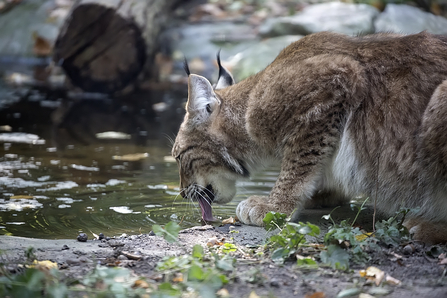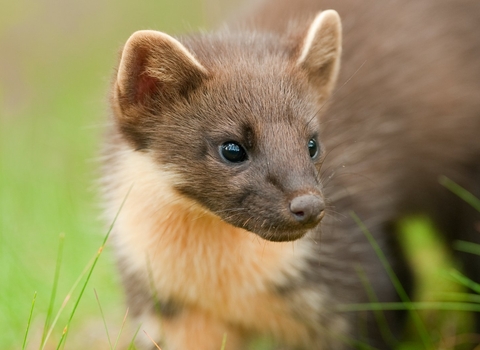Our Wilder Kent 2030 Strategy will be driven by a series of species projects, beginning with our Wilder Blean and Chough Reintroduction Projects and growing from there.
Pine marten
Stage of project: Currently in the feasibility stage with ecological and social feasibility expected to start later in 2023, subject to funding.
Pine martens are a native but critically endangered mammal in Britain. They suffered a drastic population decline during the 18th and 19th century due to habitat loss from deforestation, predator control and hunting for the fur industry, with significant populations remaining only in Scotland and Ireland. Pine marten became protected by the Wildlife and Countryside Act 1981 and, since that time, they have been able to expand their range across Scotland and to a certain extent into England. The population has also been bolstered by reintroductions occurring in Scotland, Wales and England.
Pine martens have both intrinsic and extrinsic value; they are an important flagship species. Pine martens are an indicator species and demonstrate the health of the habitat in which they live, Landscape-scale initiatives could benefit from the use of the pine marten as an indicator species to help inform the long-term biodiversity success of habitat management and creation. They play an important role in maintaining small mammal and bird populations in ecosystems and research suggests that an additional benefit that they bring is a potential increase in our native red squirrel populations.
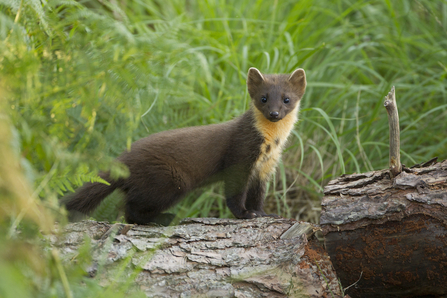
Pine marten © Mark Hamblin / 2020VISION
Seagrass
Stage of project: Under consideration.
Seagrass provides a complex habitat for marine life to forage for food, breed and shelter from predators. Seagrass meadows are hugely important for marine wildlife - the dense cover acts as a nursery for juvenile fish and crustaceans, while seahorses use their tails to anchor themselves to the grass. The fish that mature in the safety of the seagrass meadows then contribute to the fish stocks that our fishing industry relies on. The plants' dense network of roots and rhizomes binds sediment together, making the sand or mud more stable and slowing down coastal erosion. Seagrass is also a globally important carbon sink that can store carbon 35 times faster than rainforests (info sourced from Hampshire & Isle of Wight Wildlife Trust).
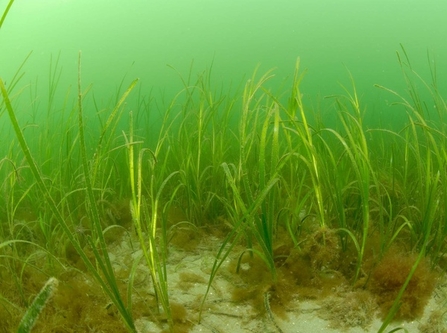
Seagrass bed © Paul Naylor
Beaver
Stage of project: Beavers are already present in the UK. We are supporting communities living with beavers to support their spread and have appropriate management in place.
Beavers already live here. We will be supporting their survival and spread through appropriate management to promote coexistence. Eurasian beaver (Castor fiber) are medium-sized mammals that are semi-aquatic, like otters. They mostly live in water, but forage in water and on land. They are vegetarians and eat over 300 species of plants, including lots of invasive species in Britain.
Beavers are known as 'ecosystem engineers' or a 'Nature-based Solution' because they create and affect the habitats they live in, benefitting other wildlife and people.
For example, when beavers build dams, this slows and cleans the water. This means that, during periods of heavy rain, less water flows downstream, reducing flooding and creating wet woodlands and ponds. These new habitats also act as carbon sinks, helping to slow climate change. Beavers also create new habitats that benefit other species, like invertebrates, and bats, as well as endangered species such as water vole.
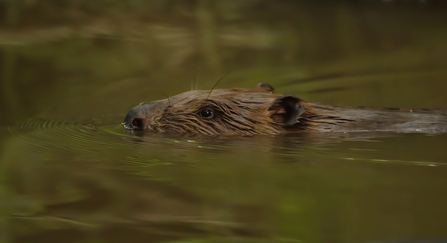
Beaver swimming with its head just above the water © Russell Savory
Oyster
Stage of project: Under consideration.
Left undisturbed, oysters will form complex reef structures which provide habitats and refuge for a diversity of organisms, such as juvenile fish, crabs, sea snails and sponges. Native oyster populations have declined by 95% in the UK since the mid-19th century and are now predominantly found in the southeast of the UK. Native Oysters provide us with a range of ecosystem services and hold both economic and environmental importance including; water quality improvement, ecosystem engineering, reduction in nitrogen pollution, cultural value for coastal communities (info sourced from Native Oyster network).
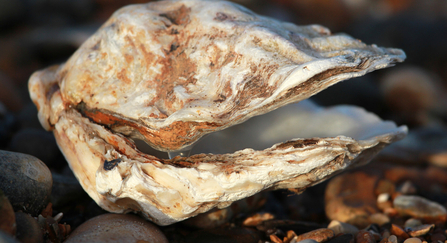
Oyster - Jim Higham
Elk
Stage of project: Under consideration.
The elk is a major ecosystem engineer. Like its smaller cousin, the red deer, it influences the natural regeneration of shrubs and trees. Their nibbling of herbs, the leafy components of shrubs and young tree seedlings helps promote natural regeneration. Their grazing and trampling helps to maintain open clearings.
Elk close their nostrils to submerge completely underwater for feeding. Submerged vegetation provides a higher proportion of the elk’s diet than it does for the hippopotamus. When settled, elk occupy a home range of several square kilometres to several hundred, depending on food availability. Their population size is regulated largely by wolf predation and quality of habitat, particularly the availability of food (info sourced from Rewilding Britain).
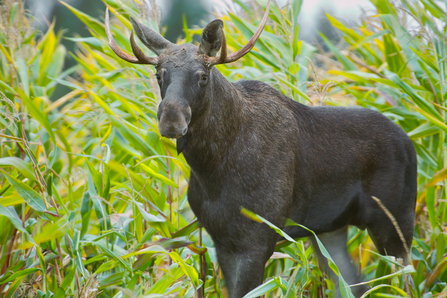
Lynx
Stage of project: Under consideration.
Top predators like Lynx are an important part of our ecosystems. They change the behaviour of prey species through the so-called "ecology of fear". Through faeces, urine or scrapes, lynx leave scent marks that advertise their presence. This keeps animals on the move which helps to prevent overgrazing and allows tree saplings and other vegetation to establish. Lynx also prey directly on roe deer which are overabundant in much of Britain. It will take on larger ungulates such as red deer or reindeer when other prey is scarce. Lynx also eat foxes, rabbits, hares, rodents, and birds. Carcasses left by lynx provide food for other species and help fertilise the soil as they decay (info sourced from Rewilding Britain).
